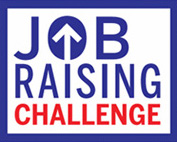Assistive technology … good for business!
by Beth Finke
After writing that blog post last week singing praises to Apple for creating products that include assistive technology as standard features, I read a story in the Wall Street Journal about Samsung trying to get an injunction to block Apple from selling devices that come with VoiceOver.
VoiceOver is the function that blind people like me use with iPhones — we get a description of what the iPhone is showing by touching its screen. VoiceOver describes text and icons — including audio descriptions of the battery level and the network signal — and it comes free of charge when you buy an iPhone. Turns out Samsung holds a patent on a feature that allows users to touch a button to make devices read text aloud, and they said VoiceOver infringed on its patent. The judge did not grant the injunction, and I found it so interesting to look (so to speak) at the case from a business point of view in Reporter John Paczkowski’s Wall Street Journal article:
Samsung has now identified itself as a company willing to accept the loss of accessibility for the vision-impaired as collateral damage in its battle with Apple. It has made a big public move to make it more difficult for the blind to use computers. That’s just foolish — more so, now that the judge presiding over the case has stayed the suit.
How refreshing to think that including assistive technology is more than a “do-gooder” thing to do — it can be good for business too. As John Paczkowskiwrites, “Leaving aside the ethics of asserting a patent against a feature designed to help the blind, this is unwise … it’s the PR equivalent of punching yourself in the face.”







 A few weeks ago I found myself talking with Erik Cook, one of my colleagues here at Easter Seals, about the books we are reading, and book clubs we belong to now or have belonged to in the past.
A few weeks ago I found myself talking with Erik Cook, one of my colleagues here at Easter Seals, about the books we are reading, and book clubs we belong to now or have belonged to in the past.  Here’s my intern Kelly Zatlin with another guest blog post.
Here’s my intern Kelly Zatlin with another guest blog post. A lot of devices have to be adapted before I can use them. I had to add Braille labels to our microwave, oven and washer/dryer at home so I’d know which button does what. I buy specially-made watches and clocks that say the time out loud for me. And we had to equip my laptop computer at home and my PC at work with a
A lot of devices have to be adapted before I can use them. I had to add Braille labels to our microwave, oven and washer/dryer at home so I’d know which button does what. I buy specially-made watches and clocks that say the time out loud for me. And we had to equip my laptop computer at home and my PC at work with a 
 I am pleased to introduce David Dreith as a guest blogger today. David is executive vice president at
I am pleased to introduce David Dreith as a guest blogger today. David is executive vice president at  Maurice Snell is a charmer. He’s friendly, articulate and quite the comedian! But more importantly, Maurice is a man living with autism who has found his niche in life.
Maurice Snell is a charmer. He’s friendly, articulate and quite the comedian! But more importantly, Maurice is a man living with autism who has found his niche in life. An
An